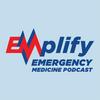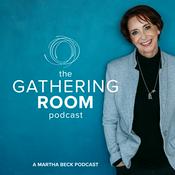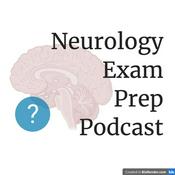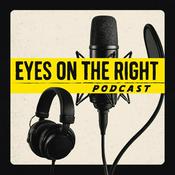144 episodes

Measles, Mumps, Rubella, and Varicella with Dr Tim Horeczko
2025/12/11 | 34 mins.
In this episode, Sam Ashoo, MD and Tim Horeczko, MD discuss the November 2025 Pediatric Emergency Medicine Practice article, Emergency Department Management of Measles, Mumps, Rubella, and Varicella in Pediatric Patients00:00 Introduction to Emergency Medicine00:21 Welcome and Holiday Greetings01:16 Special Guest Introduction01:41 Discussion on Pediatric Emergency Medicine04:55 Epidemiology of Measles08:16 Challenges in Diagnosing Measles14:27 Mumps: Symptoms and Complications27:36 Rubella: Risks and Symptoms29:28 Varicella: Symptoms and Precautions33:12 Differential Diagnosis and Conclusion35:14 Using Inductive Reasoning in Medical Diagnosis35:40 Recognizing Purpuric Rash and Its Implications36:22 Guidance for EMS Colleagues on Handling Fever and Rash37:14 Importance of Communication and Relationships with EMS39:12 Decontamination and PPE Protocols for EMS42:34 Detailed Patient Assessment in the ED46:06 Diagnostic Testing and Clinical Diagnosis49:20 Reporting Responsibilities and Treatment Protocols01:01:19 Addressing Vaccine Controversies and Public Trust01:06:25 Conclusion and Additional ResourcesCheck out Dr Horeczko's podcast - Pediatric Emergency PlaybookEmergency Medicine Residents, get your free subscription by writing [email protected]

Alcohol Withdrawal
2025/11/21 | 32 mins.
In this episode, Sam Ashoo, MD and T.R. Eckler, MD discuss the November 2025 Emergency Medicine Practice article, Diagnosis and Management of Emergency Department Patients With Alcohol Withdrawal SyndromeEpidemiology & Background Rising ED visits related to alcohol use. Mortality rates and spectrum of patient presentations. Importance of high suspicion and complexity of cases.Pathophysiology & Mechanisms Alcohol metabolism and neurochemical changes. Differential diagnosis: Conditions that mimic alcohol withdrawal.Prehospital & EMS Considerations Role of EMS in triage and initial management. Use of sobering centers vs. ED transport. Prehospital administration of benzodiazepines (IM midazolam).History & Risk Assessment Key questions to assess risk for alcohol withdrawal syndrome. Importance of patient history, medication use, and comorbidities. Discussion on patient honesty and rapport.Physical Exam & Scoring Systems DSM-5 criteria for alcohol withdrawal. Use of CIWA-AR, BAWS, and PAWSS scoring systems. Importance of objective measurement for monitoring and disposition.Complications & Special PresentationsComplicated alcohol withdrawal: Hallucinosis, seizures, delirium tremens. Diagnostic workup: Labs, imaging, and co-ingestions. Special populations: End-stage liver disease, pregnancy, intubated patients.Treatment Strategies Mainstay: Benzodiazepines (types, dosing, and protocols). Phenobarbital: Indications, dosing, and evidence. Adjunctive therapies: Thiamine, glucose, magnesium. Alternative/adjunct medications: Gabapentin, ketamine, dexmedetomidine, baclofen.Clinical Pearls & Practice Changes Early, aggressive therapy to prevent complications. Symptom-based vs. fixed-schedule treatment. Gabapentin as an alternative or adjunct. Anti-craving medications for relapse prevention.Disposition & Protocols Use of scoring systems for safe discharge, observation, or admission. Importance of protocolized approaches and community resources.Summary & Take-Home Points Five key practice-changing points. Clinical pathway.Emergency Medicine Residents, get your free subscription by writing [email protected]

Diphtheria, Pertussis, and Tetanus with Dr Lara Zibners
2025/11/07 | 20 mins.
In this episode, Sam Ashoo, MD and Lara Zibners, MD discuss the August 2025 Pediatric Emergency Medicine Practice article, Diphtheria, Pertussis, and Tetanus: An Update of Evidence-Based Management of Pediatric Patients in the Emergency Department Introduction and guest backgroundHost welcome, show contextDr. Lara Zibners’ credentialsEB Medicine involvementPersonal stories and clinical experienceMemorable tetanus and pertussis casesVaccine advocacyRare disease encountersDiphtheria: overview, presentation, treatmentToxigenic vs. non-toxigenic, “bull neck”Cardiac, neurologic complicationsAntitoxin, antibiotics, public healthPertussis: symptoms, vaccine, treatment“100-day cough,” apnea in infantsWaning immunity, boostersAzithromycin, treat contactsTetanus: risk, presentation, managementClostridium ubiquity, no outbreaksMuscle spasms, autonomic instabilityAirway, sedation, antibioticsKey ED takeaways and pearlsEarly suspicion, isolationICU admission for severe casesVaccination, reportingResources and article summaryAppendix, clinical pathwayebmedicine.net referenceCME, further readingGuest’s podcast plug and closing remarks“Unstable Vitals” podcastWhere to listenThank you, sign-offCheck out Dr Zibner's podcast Unstable VitalsEmergency Medicine Residents, get your free subscription by writing [email protected]

Adrenal Insufficiency
2025/10/21 | 25 mins.
In this episode, Sam Ashoo, MD and T.R. Eckler, MD discuss the October 2025 Emergency Medicine Practice article, Emergency Department Evaluation and Management of Patients With Adrenal InsufficiencyIntroductionWelcome and host introductionsBrief overview of the episode’s topicResources and CME reminderArticle OverviewSource: Emergency Medicine Practice, October 2025Authors: The SimcoesImportance of evidence-based reviewClinical Context & EpidemiologyFrequency and rarity of adrenal insufficiencyDiagnostic challenges and statisticsImportance of recognizing adrenal crisisPathophysiologyPrimary, secondary, and tertiary adrenal insufficiencyCauses and mechanismsKey anatomical and physiological conceptsDifferential DiagnosisOverlap with other diseases (infections, autoimmune, endocrine, psychiatric, cardiac, GI, etc.)Importance of considering adrenal crisis in complex casesPrehospital CareEMS recognition and limitationsImportance of medication history and emergency kitsLegal and logistical barriers to prehospital hydrocortisoneEmergency Department EvaluationRecognizing symptoms and prioritizing careRole of EMR and clinical decision supportKey history and risk factors (medications, steroid use, opioid use, comorbidities)Physical ExaminationSpecific and nonspecific findingsCushingoid features vs. primary adrenal insufficiency signsDiagnostic WorkupLaboratory studies (cortisol, ACTH, renin, aldosterone, TSH, etc.)Imaging considerationsGold standard tests and their limitations in the EDTreatmentImmediate administration of hydrocortisoneDosing for adults and pediatricsSupportive care (fluids, glucose, treating underlying cause)Sick day dosing and home managementSpecial PopulationsPregnancy considerationsSeptic shock and adrenal crisisCommon Pitfalls & TakeawaysDelaying steroids for labs/diagnosisImportance of high suspicion and early treatmentKey trivia and learning pointsClosingSummary and final thoughtsReminders for further reading and CMEFarewell and next episode teaserEmergency Medicine Residents, get your free subscription by writing [email protected]

Steroid Use – An Interview with Dr. Evan Dvorin
2025/10/06 | 18 mins.
In this episode, Sam Ashoo, MD interviews Evan Dvorin, MD about the dangers of short term steroid use.Background & Regional DifferencesDr. Dvorin’s clinical journey from New England to New Orleans. Noticing increased use of corticosteroids for common conditions in the Southeast. Discussion of how steroid prescribing practices vary by region and setting.Inappropriate Steroid UseCommon conditions where steroids are often inappropriately prescribed (sinus infections, bronchitis, sciatica, rashes, plantar fasciitis, etc.). Trends showing increased steroid prescribing over time. Similar patterns observed in emergency, urgent care, and primary care settings.Risks and Side Effects of Short-Term Steroid UseShort-term steroids can cause significant side effects: infection, sepsis, bone fractures, thromboembolism, psychiatric effects, hyperglycemia. Dose-response relationship: higher doses and repeated use increase risks. Some side effects (e.g., bone loss) may persist beyond two months.Patient Communication & Shared Decision-MakingImportance of discussing risks with patients, tailored to individual risk factors (e.g., diabetes, psychiatric history, age). Strategies for educating patients and managing expectations. The role of patient education videos and resources.Impact of Provider Education & Quality MetricsOchsner Health’s initiatives to reduce inappropriate steroid use. Use of CME, quality dashboards, and feedback to clinicians. Evidence that education and reporting can reduce unnecessary prescriptions.Special Populations & ScenariosConsiderations for pediatric patients and repeated dosing. Challenges when specialists recommend steroids for certain conditions (e.g., sciatica, neurosurgery cases). The need for evidence-based practice and inter-provider communication.Medical-Legal ConsiderationsLawsuits related to steroid side effects (e.g., fat atrophy, infection). Importance of documentation and informed consent.Alternatives & Symptom ManagementFocusing on treating the patient’s most bothersome symptoms. Non-steroid options and the value of patient education about illness duration and expectations.ResourcesMention of Dr. Dvorin’s educational video on corticosteroid side effects (available on YouTube). Reminder of EB Medicine’s journals and resources for further learning.ConclusionKey takeaway: “Do no harm” and practice evidence-based medicine. Encouragement for clinicians to review their prescribing habits and educate patients.Ochsner "Side effects from corticosteroids" Video: https://www.youtube.com/watch?v=PdMJ9HYxkck
More Education podcasts
Trending Education podcasts
About EMplify by EB Medicine
Listen to EMplify by EB Medicine, The Mel Robbins Podcast and many other podcasts from around the world with the radio.net app

Get the free radio.net app
- Stations and podcasts to bookmark
- Stream via Wi-Fi or Bluetooth
- Supports Carplay & Android Auto
- Many other app features
Get the free radio.net app
- Stations and podcasts to bookmark
- Stream via Wi-Fi or Bluetooth
- Supports Carplay & Android Auto
- Many other app features


EMplify by EB Medicine
download the app,
start listening.





































